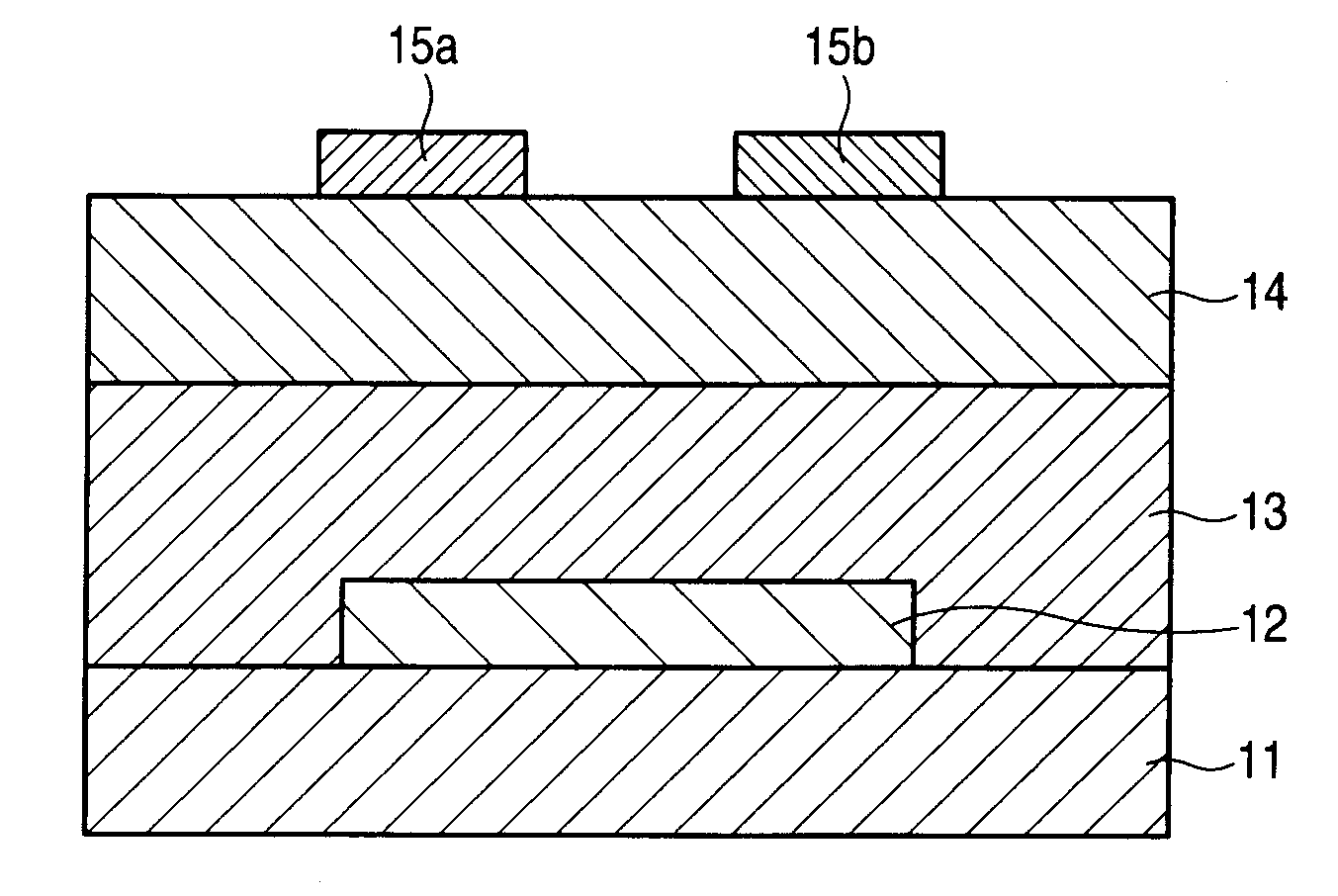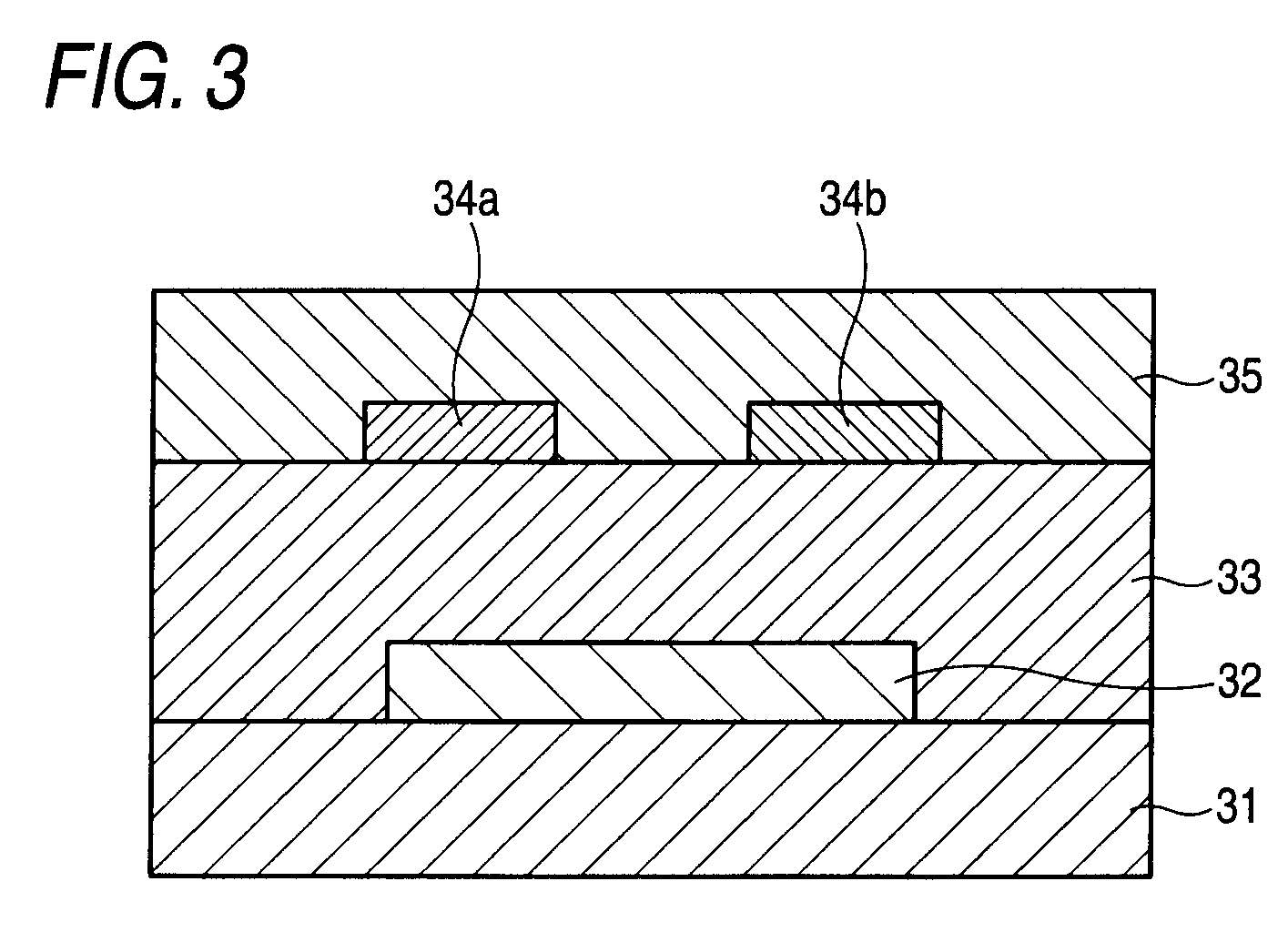Organic semiconducting material, and film, organic electronic device and infrared dye composition each including said material
a semiconducting material and organic technology, applied in the direction of organic semiconductor devices, porphines/azaporphines, final product manufacturing, etc., can solve the problems of low energy conversion efficiency of organic thin-film solar cells, many materials known as infrared dyes suffer decomposition, and cannot match silicon-utilized solar cells in photoelectric conversion capability, etc., to achieve high stability
- Summary
- Abstract
- Description
- Claims
- Application Information
AI Technical Summary
Benefits of technology
Problems solved by technology
Method used
Image
Examples
examples
[0112]The invention will now be illustrated in more detail by reference to the following examples, but these examples should not be construed as limiting the scope of the invention.
synthesis example
[0113]
[0114]Silicon dihydroxynaphthalocyanine (1.0 g, 1.29 mmol), chlorotributylsilane (4.4 mL), tributylamine (4.0 mL) and β-picoline (140 mL) were mixed, and heated under reflux for 2 hours under a nitrogen atmosphere. The resulting reaction solution was cooled to room temperature, and poured into a solvent mixture of water (100 mL) and ethanol (100 mL), whereupon a green powder separated out. The green powder was thoroughly washed with ethanol, the starting-point component thereof was removed by column chromatography (NH silica, developing solvent toluene), and then the thus isolated product was recrystallized from toluene. Thus, Compound 2 was obtained as green crystals having a metallic luster (0.82 g, 54% yield). By HPLC measurement, the purity of Compound 2 was ascertained to be 99% or higher.
[0115]1H NMR (CDCL3, 400 MHz) δ=10.12 (s, 8H), 8.68 (dd, 8H), 7.93 (dd, 8H), −0.40 (d, 36H), −0.49 to −0.60 (m, 6H), −2.00 ppm (d, 12H).
[0116]
[0117]Each of Compound 1, Compound 3, Compou...
example 1
[0131]A chloroform solution (ranging in concentration from 1×10−6 to 3×10−6 mol / L) was prepared using each of the present Compounds 1, 2, 3, 4, 10 and 11 and the comparative Compound 1 (bistrihexylsilylsilicon naphthalocyanine, purchased from Aldrich and purified by sublimation), and absorption spectrum measurement was made thereon. In addition, solid film of each of those compounds was formed by vacuum evaporation (degree of vacuum: 4×10−4 Pa or below), and absorption spectrum and ionization potential Ip measurements were made thereon. Further, electron affinity Ea (eV) was determined from an energy gap Eg (eV) estimated from the long wavelength end of each solid film's absorption and the Ip by use of the relation Ea=Ip+Eg. The absorption spectra were measured with an ultraviolet-visible spectrometer (MPC-2200 / UV-2400, made by Shimadzu Corporation). The Ip measurements were made with an instrument for photoelectron spectroscopy in air, RIKEN KEIKI AC-2, made by Riken Keiki Co., Ltd...
PUM
| Property | Measurement | Unit |
|---|---|---|
| gate voltage-drain voltage | aaaaa | aaaaa |
| drain current | aaaaa | aaaaa |
| temperature | aaaaa | aaaaa |
Abstract
Description
Claims
Application Information
 Login to View More
Login to View More - R&D
- Intellectual Property
- Life Sciences
- Materials
- Tech Scout
- Unparalleled Data Quality
- Higher Quality Content
- 60% Fewer Hallucinations
Browse by: Latest US Patents, China's latest patents, Technical Efficacy Thesaurus, Application Domain, Technology Topic, Popular Technical Reports.
© 2025 PatSnap. All rights reserved.Legal|Privacy policy|Modern Slavery Act Transparency Statement|Sitemap|About US| Contact US: help@patsnap.com



